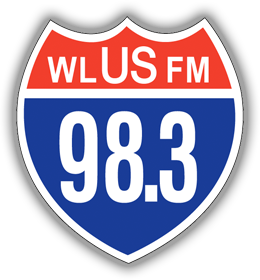What are the 5 types of floods?
Storms can wreak havoc on property and lives. This phenomenon is inevitable but an awareness of its nature and impact can help residents prepare and protect themselves and their loved ones. Force 1 Restoration, a water damage restoration company, shares the different types of floods and their dangers that homeowners must be aware of.

1. Flash floods
Flash floods are caused by heavy rainfall or rapid snow thaw. They usually cover a relatively small area and occur with little to no notice, generally less than six hours. It is a swift rise of rapid-moving water that sweeps and destroys everything in its path including large objects such as cars, bridges, boulders, and trees. They can also cause significant damage to home structures, foundations, and appliances. One of the other results of this extensive water damage is mold growth, which can have serious health effects.
The usual causes of flash floods are severe thunderstorms, hurricanes, tropical storms, or other weather patterns as well as a break in dam or levee or a mudslide. Due to the poor permeability of the soil, urban areas are more prone to flash floods than suburban or rural areas. Areas near floodplains and with blocked drainage are also particularly at risk. Flash floods are a high-alert situation and residents must stay tuned in for any flood warnings and evacuation announcements.
2. Coastal floods
Strong winds, tides, heavy rainfall, or storm surges that move towards a coast during high tide cause sea levels to rise. A coast’s dune or dike that has fewer defenses and lower elevation is easily breached by powerful waves and the area gets flooded. Coastal areas are more vulnerable to flooding due to their proximity to the ocean, and the rising sea levels due to climate change.
Residents must be cautious during coastal flooding as it can lead to drownings, injuries, sickness due to exposure to contaminated water and mold growth, and mental health problems. Coastal flooding is categorized into minor, moderate, and major flooding according to the risk of property damage and threat to lives.
3. Fluvial floods (river floods)
Extreme rainfall from tropical storm systems, long-lasting thunderstorms, combined rainfall and snowmelt, and ice jams are the usual causes of river flooding. A river flood occurs when the water gradually rises over the top of the riverbanks due to extensive rainfall or flooding over an extended period. River floods are predictable and therefore rarely result in loss of lives but a break in a dam or dike can lead to major economic losses.
4. Pluvial floods (urban floods)
Pluvial flooding is the accumulation of floodwaters that result when the inflow of stormwater exceeds the capacity of a drainage system to infiltrate water into the soil or to carry it away. Rapid urbanization has disturbed the natural landscape and its drainage pattern. Aging and inadequate drainage infrastructure and failing pipe systems can cause additional flooding problems. During an urban flood, the overflowing drainage system spills water out into the street, creating ponds and puddles in natural or man-made hollows and low-lying areas. This overflowing water makes driving dangerous, causes significant structural damage to buildings, and infiltrates sewage pipes.
5. Sewage floods
When the sewage systems or treatment plants become overwhelmed by heavy rainfall, they release untreated sewage into water bodies. These floods are a serious hazard as the sewage water contaminates the water with harmful bacteria and chemicals. This contamination can cause infections, diarrhea, fever, vomiting, and other diseases. Sewage can even leak through pipes or drains or come up through toilets, sinks, or showers.
For any water damage caused by flooding, homeowners must contact a professional water damage restoration expert such as Force 1 Restoration for a swift and efficient response.
Why Force 1 Restoration Services?
The professionals at Force 1 Restoration Services can quickly arrive at the damaged residence with the personnel, equipment, and training to begin the water removal, drying, and restoration process. The team of professionals can handle the claims process and total restoration project from beginning to end for its clients.
- Convenient Hours
- Quality Service
- Competitive Pricing
- Superior Technology
- Full Line of Services
- Trained Technicians

For more information about water damage restoration services in East Hartford, CT contact Force 1 Restoration Services at (860) 289-0417.


























